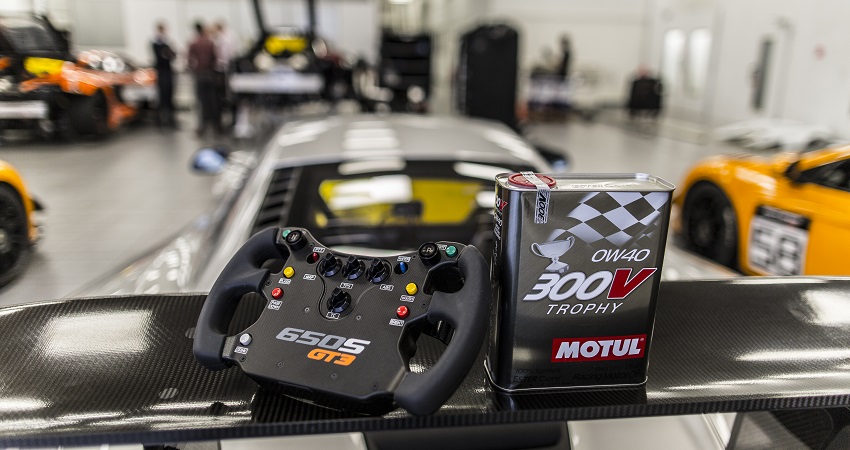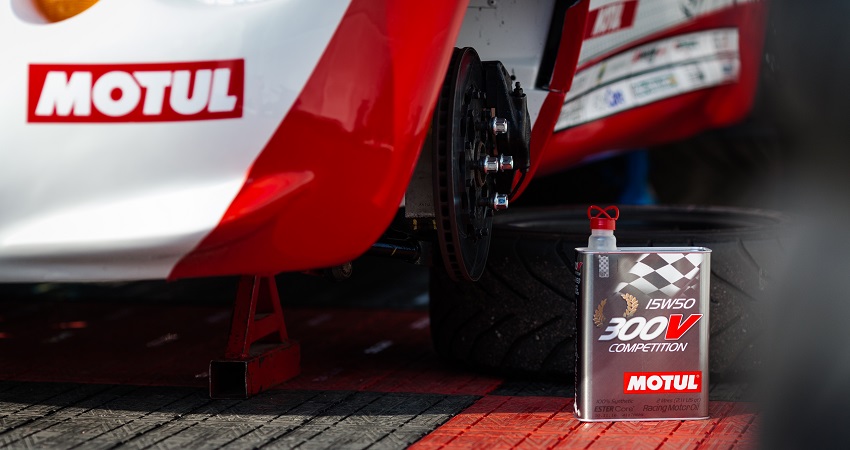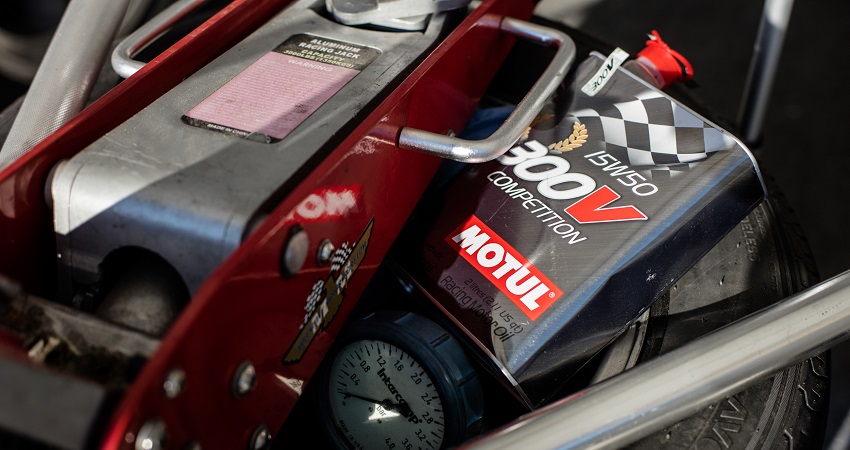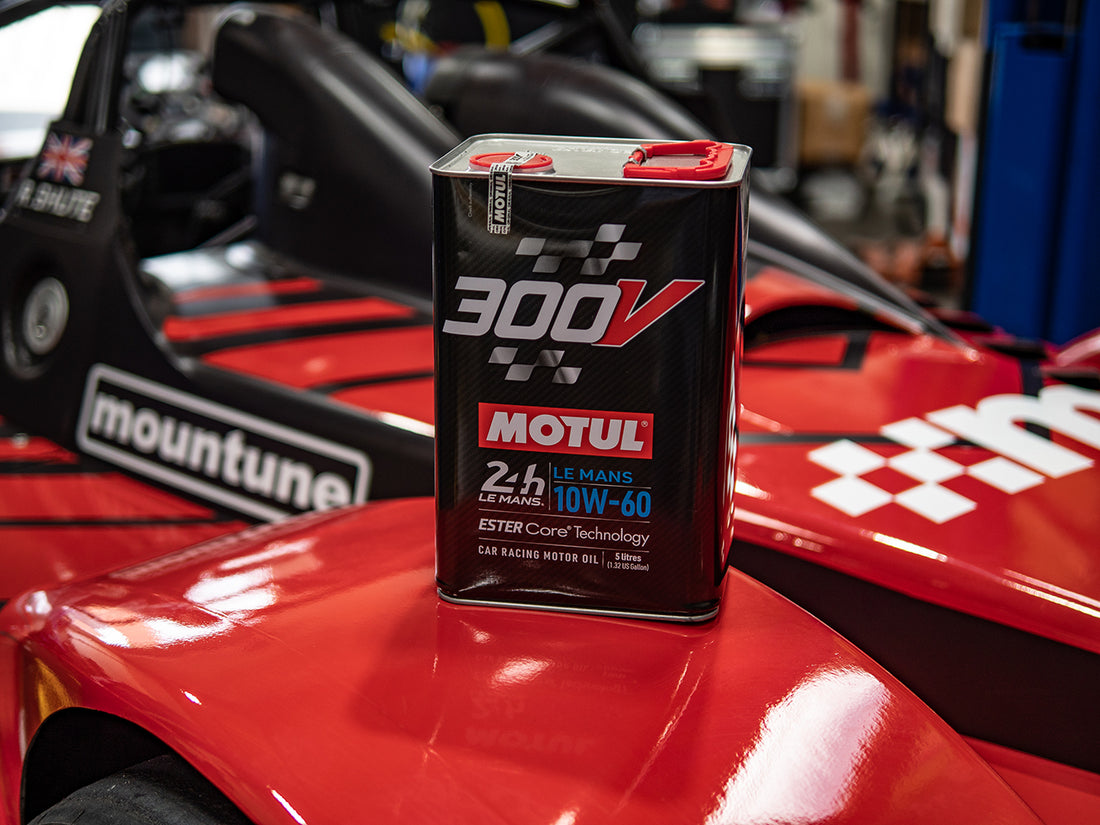High-performance engines are niche machines in more ways than one. Although many such engines are based on the same designs found in your average people-mover, the amount of fine-tuning that goes into them is immense. Because of that niche engines require niche lubricants, and Motul 300V is about as niche as it gets. Here’s what makes the 300V the ultimate high-performance engine oil.

THE SCIENCE BEHIND MOTUL 300V OILS — ESTER CORE TECHNOLOGY
Motul 300V is an ester-based lubricant that utilizes our proprietary ESTER Core technology. To understand the benefits of ester-based oils, we have to dig into the basics of motor oil manufacturing.
Engine oils can be mineral, synthetic, or semisynthetic in nature. We can classify all three of these types of oils into 5 different groups of base stocks. Base stock is the process and product the oil is based on. The first two groups (Group 1 and Group 2) belong to mineral oils (solvent refined and hydrotreated), while the latter 3 groups belong to synthetic oils.
These three groups of synthetic oils include Group 3 where mineral oils are refined for much longer to extract better performance, the Poly-Alpha-Olefine Group 4, and the Esters based Group 5. For the purposes of this guide, we’ll focus on Group 4 and Group 5 oils.
Group 4 oils, or PAO oils, are synthesized lubricants. However, they are based on a mineral stock. Group 4 oils offer better heat handling than the first three groups and are generally more durable in terms of oil film strength. Some of the Motul 8100 series of motor oils belong here.
The issue with Group 4 lubricants is the time they require to produce a protective film. In other words, the engine internals have to gain some momentum before the oil can do its job and form a protective layer over all surfaces. While this is generally a non-issue for regular cars, it can be a massive problem for high-performance engines.
Esters to the Rescue
This is where esters come in. Esters are chemical compounds derived from acids that contain alcohols. The use of esters in the industry isn’t a novel concept. These organic compounds have thousands of different applications. However, only a small number of them are used in lubricants, especially those designed for automotive use.
What makes esters so special is their ability to handle much higher stresses compared to Group 4 lubricants. This alone puts them ahead of PAO oils when it comes to high-performance applications. Furthermore, esters are attracted to metal surfaces through a strong electrochemical bond.
In other words, this type of engine oil sticks to internal components and stays there for a long time by default. This chemical bond eliminates cold start friction that can affect custom-built engines where tolerances are extremely tight.
There are other benefits to this chemical property. If you’re pushing the car hard around the track, oil deprivation can potentially become an issue. By having the oil literally stick to the engine internals, your motor is protected even if it does experience a sudden, temporary drop in oil pressure.
High-Temperature Resistance
Every engine oil has a limit in terms of how much heat it can handle before it degrades. PAO-based oils are great at handling heat, but nowhere near as good as ester-based ones.
Esters remain stable at incredibly high temperatures (relative to other groups listed above), which is why they are inherently more suitable for high-performance applications. Airplane engines run on esters, in part for this very reason.
THE MOTUL 300V FAMILY

The thing to remember is that not all esters are created equal. After all, there are hundreds of different types of esters that offer equally different properties. These different properties allow us to custom-tailor our lubricants for specific applications.
The entire 300V family was developed on this principle of boutique performance profiles. There are 3 different types of Motul 300V automotive engine lubricants:
- 300V Power
- 300V Competition
- 300V Le Mans
Keep in mind that these come in different viscosity grades, which is a crucial factor when you’re selecting the right oil for your engine.
Motul 300V Power

Compared to the previous two versions, Motul 300V Power is all about GT racing. This lubricant comes in a 5W-40 viscosity rating, among others, which ensures good oil pressure on startup. It’s a balanced formula that is equally focused on bringing you optimal protection and power in short to mid-distance racing. You can get 300V Power series in the following versions:
Motul 300V Competition

The Competition formula moves things into endurance racing. It’s a great performance lubricant that can be used in historic cars thanks to its 15W-50 viscosity grade. This particular version of the 300V can handle high oil dilution, which is normal for historic engines and rebuilt engines designed for GT applications. The Competition line is available in several other viscosity grades as well, including:
- Motul 300V Competition 15W-50
- Motul 300V Competition 5W-50
- Motul 300V Competition 5W-40
- Motul 300V Competition 10W-40
- Motul 300V Competition 0W-40
This is a great option for motors that require an additional layer of protection due to potential drops in oil pressure and increased wear.
Motul 300V Le Mans

Lastly, we have the Motul 300V 24h Le Mans formula. As you can probably guess by its name, this is an endurance-oriented lubricant. In fact, this oil was thoroughly tested on a Porsche Cup bench engine where it ran for 24 hours straight, just like it would in the real 24 Hours of Le Mans race.
During the test, the engine experienced virtually no oil pressure drops, virtually no wear, and most importantly — virtually no power loss for the whole duration of the test. Being a 10W-60 lubricant, Le Mans is also suitable for historic car racing.
HOW OFTEN SHOULD YOU CHANGE MOTUL 300V?
Just like most high-performance oils, Motul 300V adheres to a different set of standards. For one, these oils aren’t meant to be used for long periods of time, nor many miles. We always recommend that Motul 300V oils be changed depending on your particular use.
That can mean an oil change after every race/track day event, or 3,000 miles if you’re using it in a high-performance street car.
IS MOTUL 300V SUITABLE FOR STREET USE?

Being a premium racing oil, Motul 300V has very limited use in street applications. Can you use it in a street car? Definitely. However, short oil change intervals and the fact that most performance street engines don’t require this level of protection make 300V an overkill in many instances.
Then again, there definitely are street cars with built engines that could greatly benefit from using 300V series of oils. It all comes down to your particular car and your preferences. As a rule of thumb, cars built for street use will get more out of our 8100 series of fully synthetic oils.
THE NEW GENERATION OF MOTUL 300V
Motorsports are constantly evolving, and so are we! We’ve been working on updating our 300V series of oils, making them better than ever at handling extreme conditions of use. We’ve updated the Power, Competition, and Le Mans oils by introducing new viscosity grades and making them more reliable.
We’ve also switched to using more sustainable, renewable sources of base materials, which reduces our overall carbon footprint.
HOW TO SELECT THE RIGHT MOTUL 300V FOR YOUR CAR?
Selecting a high-performance oil for your engine will depend on a wide range of factors. Is your engine built with tight tolerances? Are you participating in long-distance racing, or are you drifting? How often do you perform oil changes? What’s your engine’s original SAE rating?
All of these things are a factor at this level of performance. Because of that, we can’t know which oil is the best for your engine as it is most likely unique in its performance parameters. Choose the 300V formula that matches your required viscosity and intended use.
Article by Jason Cooper reposted from Motul Blog.

